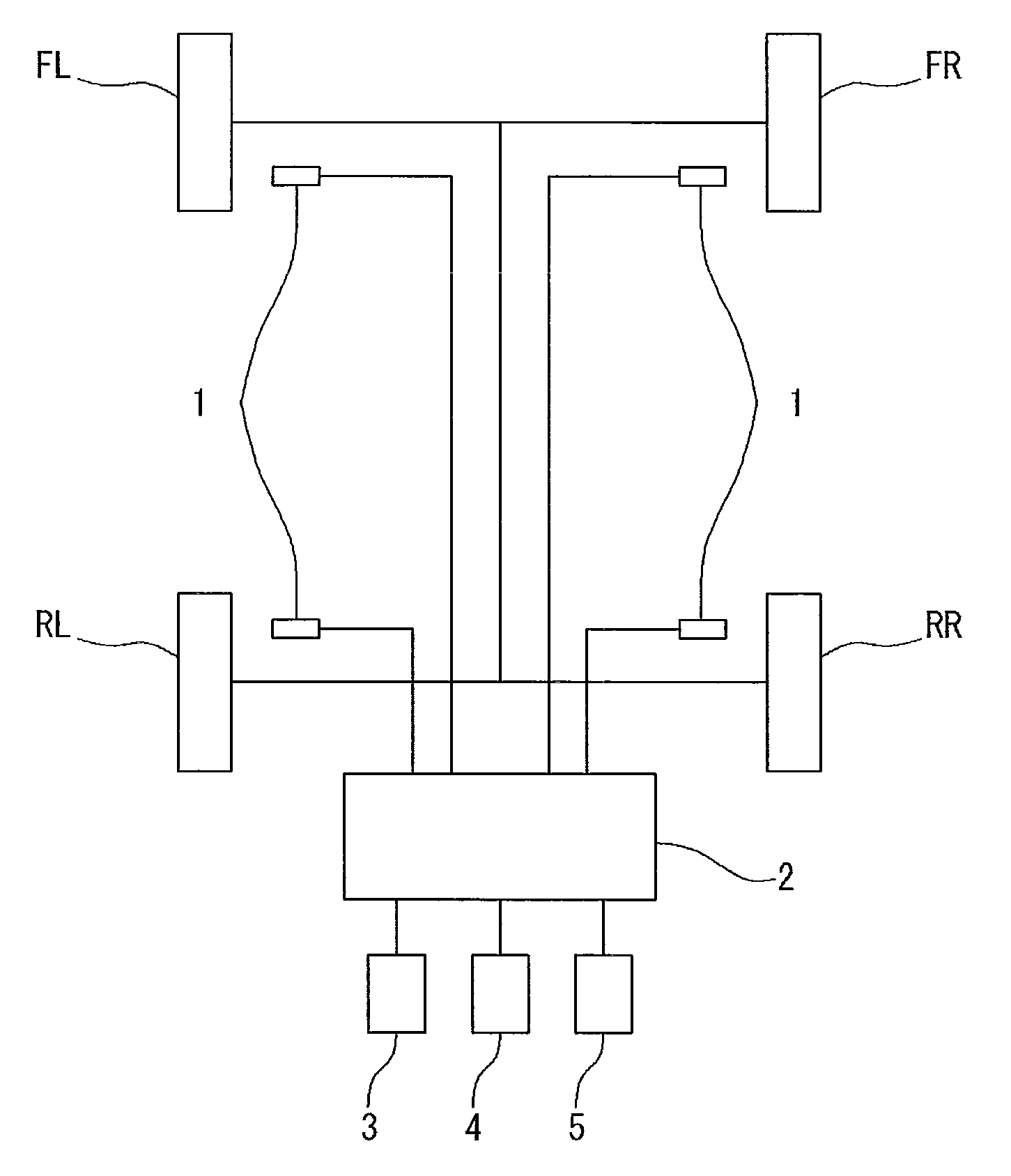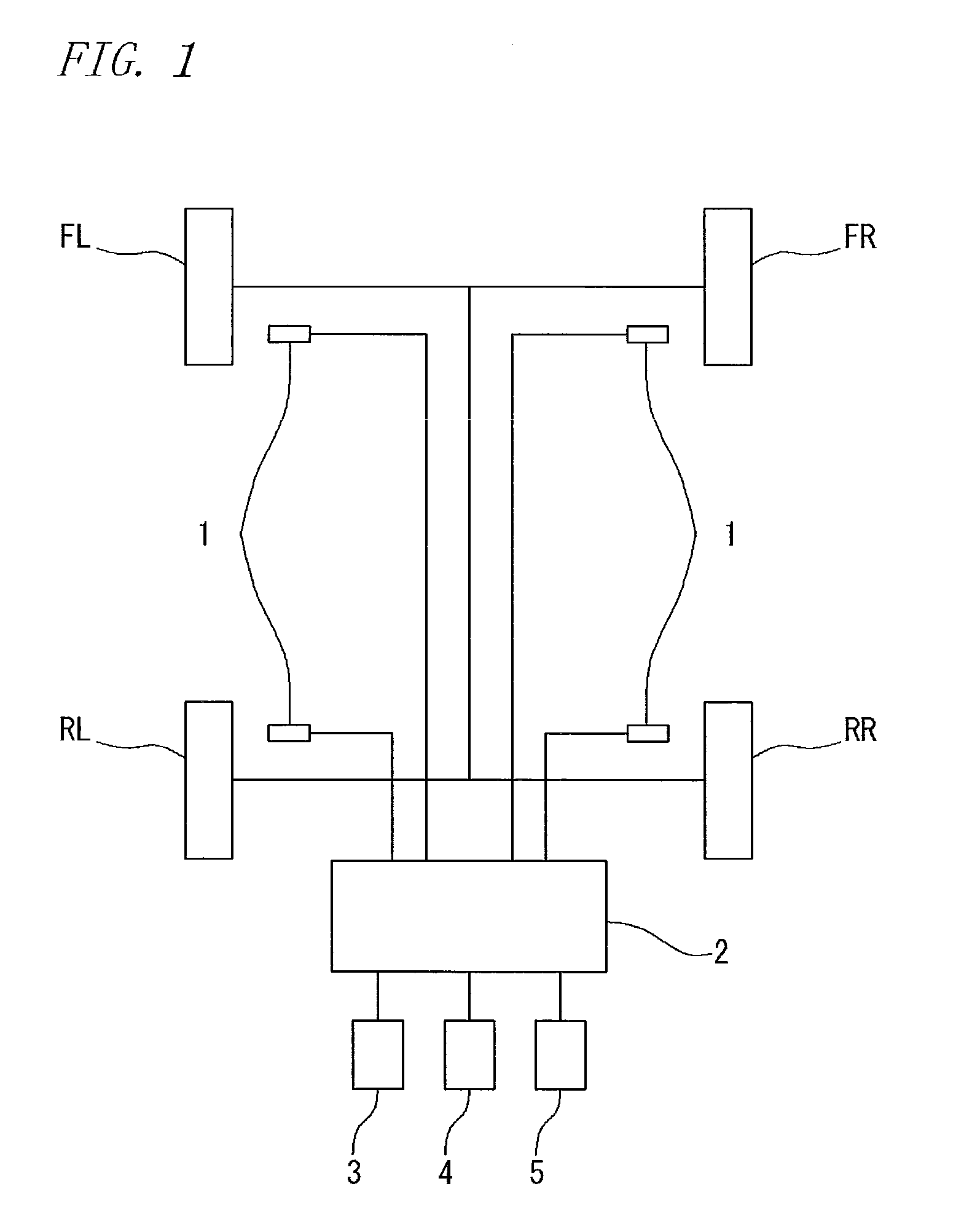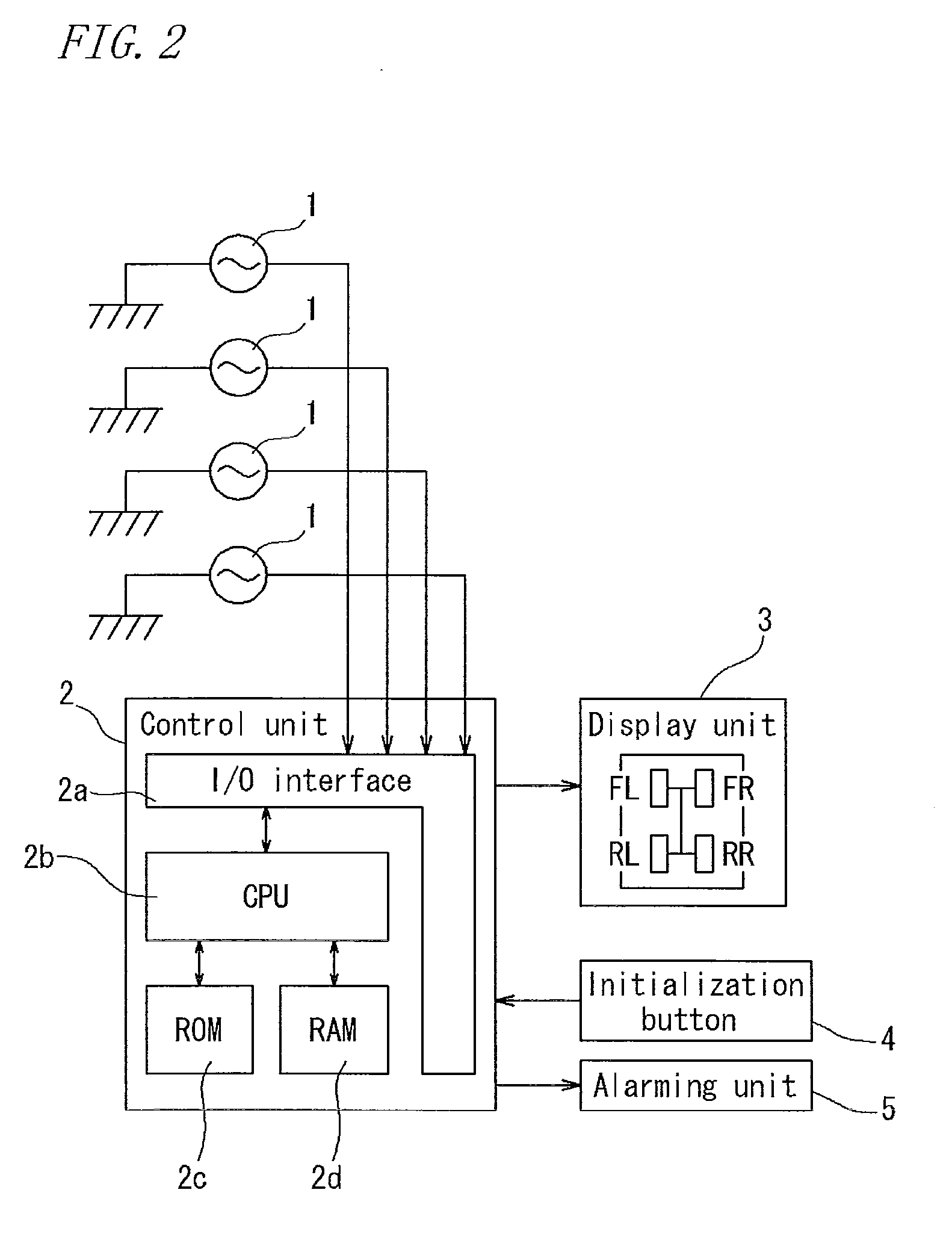Apparatus and method for detecting decrease in tire air pressure and program for detecting decrease in tire air pressure.
- Summary
- Abstract
- Description
- Claims
- Application Information
AI Technical Summary
Benefits of technology
Problems solved by technology
Method used
Image
Examples
example
[0091]Next, an example of the detection method of the present invention will be described. However, the present invention is not limited to the following example only.
[0092]Runflat tires (size: 245 / 40R18) were attached to a four-wheel-drive vehicle of 2800 cc displacement. Then, the vehicle was made to run and the rotation information regarding the respective tire wheels was sampled at every 4 ms to obtain the time-series data for the wheel speed signal. Then, a time difference among the resultant wheel speeds was calculated to thereby obtain a wheel acceleration. The following four running conditions were used.
[0093](a) Running on a road having a significantly-uneven road surface at a low speed (50 km per hour)
[0094](b) Running on a road having a smooth road surface at a low speed (50 km per hour)
[0095](c) Running on a road having a significantly-uneven road surface at a high speed (100 km per hour)
[0096](d) Running on a road having a smooth road surface at a high speed (100 km per...
PUM
 Login to View More
Login to View More Abstract
Description
Claims
Application Information
 Login to View More
Login to View More - R&D
- Intellectual Property
- Life Sciences
- Materials
- Tech Scout
- Unparalleled Data Quality
- Higher Quality Content
- 60% Fewer Hallucinations
Browse by: Latest US Patents, China's latest patents, Technical Efficacy Thesaurus, Application Domain, Technology Topic, Popular Technical Reports.
© 2025 PatSnap. All rights reserved.Legal|Privacy policy|Modern Slavery Act Transparency Statement|Sitemap|About US| Contact US: help@patsnap.com



